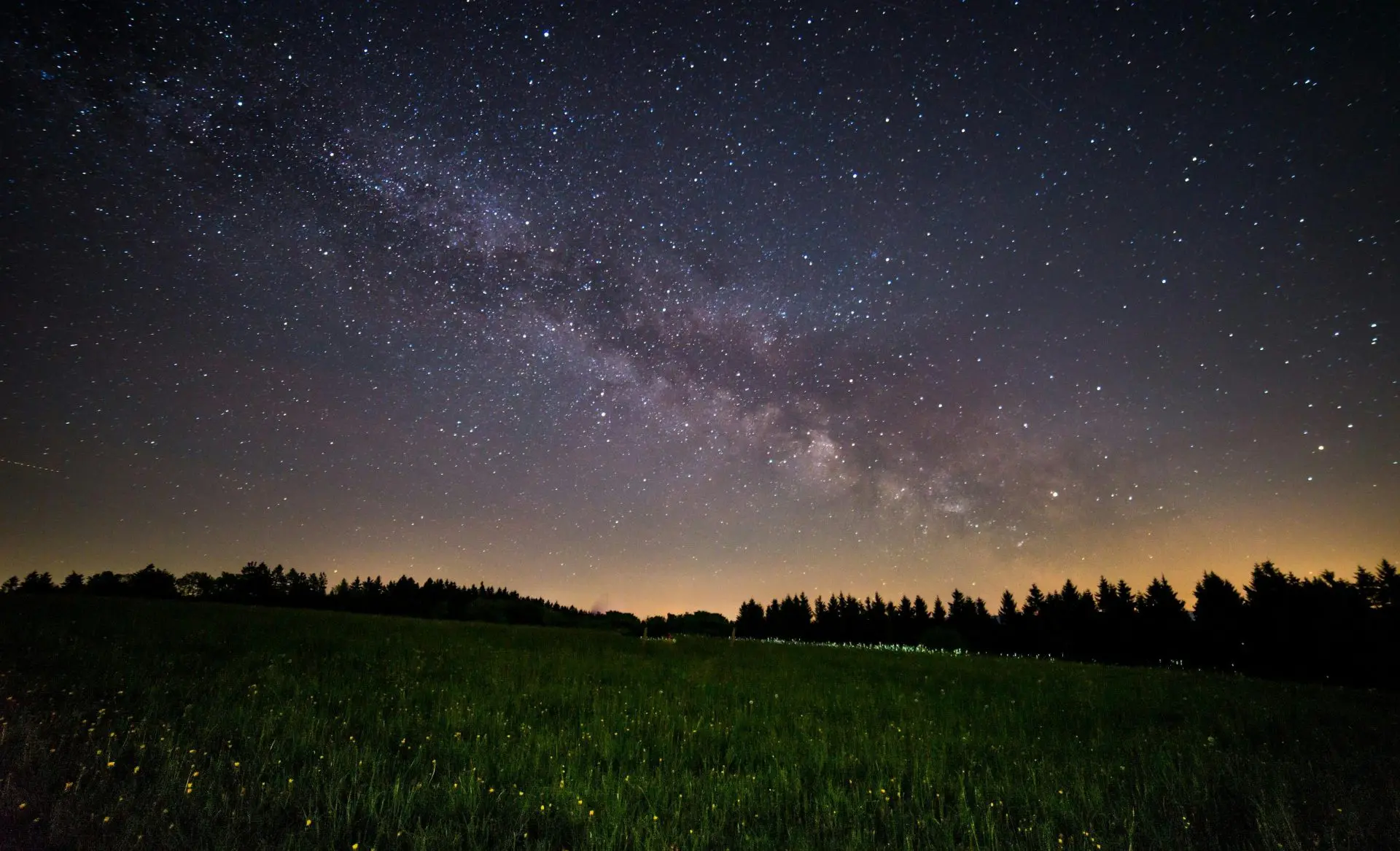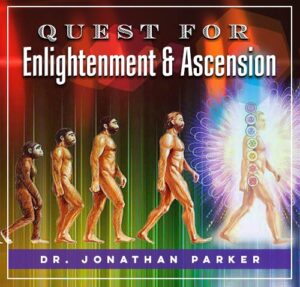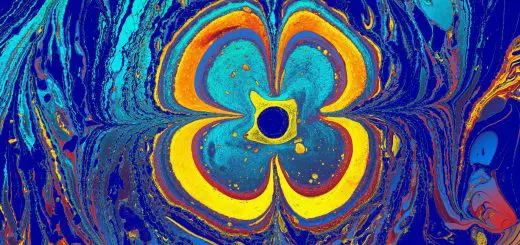What Is the Ultimate Fate of the Universe?

Looking for more amazing products? Check out our online store and explore our collection here! Happy shopping!
Before diving in, please note: This post is for informational purposes only. If you’d like to know more about how we approach topics, feel free to check out our friendly Disclaimer Page.
Hey there, amazing readers! 
We’re committed to delivering quality posts, and your support (even just sticking around despite the ads) means everything to us. So, bear with us, and thanks for helping us keep the good vibes rolling. Now, on to the fun stuff!
TRANSLATE BUTTON AT THE END OF THE ARTICLE
A Quick Overview
What lies ahead for the universe?
This question tickles the imagination of scientists and stargazers alike.
As we gaze up at the night sky, we can’t help but wonder: What will ultimately become of the vast cosmos we inhabit?
In this article, we’ll embark on an exciting journey through the universe’s potential fates, exploring everything from the Big Bang to the dark forces pushing our universe apart.
Buckle up; it’s bound to be a cosmic ride!
What Is the Ultimate Fate of the Universe? Let’s Explore!
The ultimate fate of the universe is one of the most intriguing questions in cosmology.
The sheer vastness of space, combined with its mysterious properties, means that our understanding of its future is constantly evolving.
Imagine a grand cosmic drama where time is the stage and the universe’s fate is the climax.
What could be more fascinating?
Scientists have put forth several theories about how the universe might end, each more astonishing than the last.
Are we destined for an eternity of darkness?
Or will the universe collapse back in on itself?
Maybe it will dissolve into nothingness.
As we dive deeper into these theories, we’ll explore the science behind each possibility and what it means for our existence.
Understanding the fate of the universe requires a blend of physics, astronomy, and perhaps a sprinkle of philosophy.
Our exploration will take us through historical events like the Big Bang, leading us to the present and into the speculative future.
So, let’s jump into this vast ocean of knowledge together!
A Brief Overview: The Universe and Its Mysteries
The universe is a majestic and enigmatic expanse that contains everything we know: galaxies, stars, planets, and even us!
It’s infinite, ever-expanding, and full of mysteries waiting to be uncovered.
Picture it like a grand tapestry woven with cosmic threads.
Each thread tells a story, from the birth of stars to the formation of black holes.
A fundamental concept in understanding the universe is its age.
Scientists estimate that our universe is about 13.8 billion years old.
That’s a long time!
During this period, it has gone through extensive transformations, evolving from a hot, dense state to the vast cosmos we observe today.
We believe the universe is governed by physical laws, some of which we understand and others that remain elusive.
For instance, gravity pulls us toward the Earth, while the electromagnetic force creates light and color.
However, forces like dark matter and dark energy remain largely mysterious.
They play significant roles in the universe’s structure and expansion but are still shrouded in ambiguity.
Cosmology, the study of the universe’s origin, evolution, and fate, helps us peel back the layers of this grand mystery.
Explore the Path to Spirituality and Enlightenment – Start Here.
From the smallest particles to the largest structures, scientists work tirelessly to understand how everything fits together.
And while we’ve made headway, the universe still holds many secrets.
The Big Bang: How It All Began with a Bang!
The Big Bang theory is our best explanation for how the universe began.
Imagine a point, smaller than a pinhead, containing all the energy and matter of the universe.
Then, approximately 13.8 billion years ago, it exploded!
This immense release of energy marked the birth of the universe.
During the first moments after the Big Bang, the universe was incredibly hot and dense.
As it expanded, it began to cool down, allowing particles to form.
Within minutes, hydrogen and helium atoms emerged, laying the groundwork for future stars and galaxies.
Galaxies started to cluster together under gravity, forming the cosmic web we see today.
Think of it like a giant bubble bath where bubbles of galaxies float through a sea of dark matter.
This initial expansion set the stage for everything that followed.
The cosmic microwave background radiation, which we can still detect today, serves as a remnant of that explosive beginning.
It’s like the universe’s afterglow, giving us clues about its early moments.
By studying this radiation, scientists can learn about the conditions of the universe just after the Big Bang.
So, here we are, billions of years later, living in a universe that started with a bang.
And as we delve into what lies ahead, it’s essential to keep this explosive beginning in mind.
Understanding Cosmic Expansion: Moving Apart and Away
One of the most fascinating aspects of our universe is its continuous expansion.
Galaxies are flying away from each other, and the farther they are, the faster they seem to be moving away.
It’s like a huge cosmic race!
Edwin Hubble was the first to observe this phenomenon in the 1920s, and his findings revolutionized our understanding of the universe.
Imagine blowing up a balloon: as it inflates, the dots drawn on its surface move farther apart.
That’s similar to what’s happening in our universe!
Hubble’s law describes this expansion, showing a direct relationship between a galaxy’s distance from us and its speed.
Now, why is this expansion occurring?
Initially, scientists thought it might slow down due to gravity.
However, observations have shown that not only is the universe expanding, but the rate of expansion is also accelerating.
Isn’t that wild?
This leads us to an even bigger mystery: what’s driving this expansion?
That brings us to the next exciting concept—dark energy!
Dark Energy: The Mysterious Force Driving Expansion
Dark energy is one of the most enigmatic aspects of our universe.
Comprising about 68% of the cosmos, this strange force pushes galaxies apart.
Think of it as an invisible hand gently encouraging the universe to expand at an ever-accelerating pace.
So, what is dark energy?
Well, that’s the catch.
We don’t really know!
Some scientists theorize it could be a property of space itself.
According to this idea, as space expands, more dark energy becomes available, fueling the expansion like a constant supply of gas in a car.
Others propose that dark energy might be a modification of Einstein’s theory of gravity.
This theory suggests that our understanding of gravity might need a tune-up to account for the universe’s accelerated expansion.
Dark energy complicates everything we thought we understood about the cosmos.
It poses questions about the fundamental nature of reality.
Are we just tiny specks in an ever-expanding universe, or is there something deeper at play?
The mystery continues, tantalizing us with the prospect of new discoveries.
Different Theories: What Could Happen in the Future?
As we peer into the future of the universe, several theories emerge, each more mind-boggling than the last.
Scientists have proposed various scenarios based on the universe’s current conditions, composition, and the laws of physics.
Here are some of the most discussed possibilities:
The Big Freeze: The universe continues expanding indefinitely, leading to a cold, dark void.
The Big Crunch: Gravity pulls everything back together into a singularity, causing the universe to collapse.
The Big Rip: Dark energy accelerates expansion to the point where it tears apart galaxies, stars, and even atoms.
Each theory presents its own implications for our cosmic existence.
Will we end up in a universe where nothing exists but frigid emptiness?
Or will everything someday collapse back into a singularity?
Perhaps everything will simply be ripped apart, making us mere memories in the cosmic timeline.
These theories spark the imagination and remind us of our place in the universe.
They challenge our understanding of life and existence as we grasp the enormity of cosmic fate.
As we dive deeper, let’s examine these theories one by one.
The Big Freeze: A Cold End to Cosmic Existence
The Big Freeze, also known as heat death, is a chilling concept.
In this scenario, as the universe continues to expand, it will eventually reach a point where stars burn out, and galaxies drift apart.
Imagine a once-vibrant universe transforming into a dark, lifeless void.
As stars exhaust their nuclear fuel, they will dim and eventually die out.
The remaining black holes will evaporate over trillions of years, leaving behind a cold, empty space.
This future is characterized by a slow decline into oblivion, where matter becomes increasingly sparse.
In this scenario, everything gradually loses heat, resulting in a universe at or near absolute zero.
No new stars will form, and the cosmos will be a vast, unwelcoming environment.
Life, as we know it, would inevitably cease to exist.
While the Big Freeze paints a bleak picture, it offers an opportunity to reflect on the vibrant lives we lead now.
Each star we see in the night sky is a reminder to cherish our time in the universe.
The Big Crunch: Will the Universe Rebound?
Contrary to the Big Freeze, the Big Crunch paints a different picture of the universe’s fate.
In this scenario, gravity overcomes the expansion, pulling all matter back together.
Imagine the universe collapsing in on itself, compressing everything into a dense point, similar to the state at the Big Bang.
If the total matter density of the universe is greater than a critical threshold, gravity will eventually slow down the expansion until it halts and reverses.
Galaxies, stars, and planets will converge, leading to a climactic end.
The Big Crunch raises captivating questions about cycles of existence.
Could this be a precursor to another Big Bang?
Some theorists suggest that the universe may go through endless cycles of expansion and contraction.
Each cycle could give birth to new galaxies and stars, creating a cosmic loop of rebirth.
The idea of a universe that breathes like a living organism brings a sense of wonder.
It fosters hope that even after the end, there could be a new beginning.
If the Big Crunch occurs, it might not mark an end but rather a transformation—a cosmic reset.
The Big Rip: A Dramatic Disintegration of Reality
Now, let’s turn our attention to the Big Rip.
This scenario is perhaps the most dramatic.
In this case, the universe expands at an accelerating rate due to dark energy.
Eventually, the force becomes so strong that it begins tearing galaxies, stars, and even atoms apart.
Imagine a balloon being inflated beyond its limit.
As the pressure builds, the balloon eventually bursts!
Similarly, in the Big Rip, the universe reaches a breaking point.
Galaxies will be ripped apart, stars will shatter, and even the fundamental forces holding atoms together will disintegrate.
The timeline for the Big Rip would depend on the properties of dark energy.
If it continues to grow stronger, the end could occur in a matter of billions of years.
This scenario illustrates the terrifying power of the unknown.
While the Big Rip may sound grim, it also serves as a reminder of the fragile nature of our reality.
We exist amidst the vast cosmos, with forces at play that we are just beginning to understand.
Heat Death: A Calm and Quiet Universe Awaited
As previously mentioned, heat death or the Big Freeze presents a stark and quiet end to the universe.
In this scenario, the universe will not explode or collapse dramatically.
Instead, it will fade away slowly and silently.
The universe, over trillions of years, will become a dark, desolate expanse filled with remnants of stars and galaxies.
The energy available will diminish, and we’ll witness the slow disintegration of structures that once held life.
One might think of heat death as a cosmic retirement.
Stars will fade into black holes, and the remnants of our existence will become cold and lifeless.
While it may seem disheartening, there’s beauty in the calmness of this fate.
In a universe characterized by equilibrium, entropy will reign supreme.
All matter will eventually reach a state of uniformity, leading to a serene, albeit lifeless, existence.
This perspective invites us to appreciate the vigor of life we experience right now amidst the chaos of the universe!
Quantum Fluctuations: Surprises in Cosmic Fate?
While we’ve discussed various theories, there are still mysteries lurking within the tiny realms of quantum mechanics.
Interestingly, quantum fluctuations might offer surprises in our understanding of the universe’s fate.
These fluctuations occur at the subatomic level, where particles can pop in and out of existence.
They challenge our traditional views of reality and can lead to unforeseen consequences.
Imagine tiny cosmic hiccups that could potentially spark new phenomena.
Some theorists propose that quantum effects could lead to a reformation of space-time and new universes, while others suggest they might result in unexpected cosmic events that could alter the fate we currently foresee.
As we delve into the realm of quantum mechanics, we encounter a world that operates differently from the one we experience daily.
The universe is full of surprises, and while we have frameworks for understanding its fate, quantum behaviors remind us that the cosmic narrative could take unexpected turns.
Our Role: How Humans Observe and Influence the Cosmos
As we ponder the universe’s fate, let’s take a moment to reflect on our role in this grand cosmic story.
Humans have always been curious explorers.
We’ve looked up at the stars, trying to understand our place in the universe.
With each advancement in technology, we’ve gathered more information about the cosmos.
Telescopes allow us to peer deep into space, while particle accelerators reveal the secrets of atoms.
It feels like we’re piecing together a cosmic puzzle, bit by bit.
Moreover, our existence has an impact.
By observing the universe, we alter its conditions.
Think about that!
Our very presence influences the cosmos, even if in small ways.
We contribute to the knowledge of our universe, advancing understanding of dark energy, cosmic expansion, and more.
As we unravel the mysteries of the universe, we also ponder our significance.
Our questions, curiosity, and discoveries reflect the desire to comprehend our existence and purpose.
We may not control the ultimate fate of the universe, but we can certainly appreciate our part in its story.
A Cheerful Conclusion: Embracing the Mystery Ahead!
In the end, the ultimate fate of the universe remains an enigma.
From the Big Freeze to the Big Rip, each theory offers a unique perspective on what might transpire.
While some scenarios seem bleak, it’s essential to remember the beauty of our existence.
The universe is a magnificent tapestry of events that invites us to explore, learn, and appreciate the wonders around us.
As we gaze up at the stars, let’s hold onto our sense of wonder.
Whether the universe expands forever, collapses, or surprises us in ways we cannot yet fathom, the journey itself is what matters.
We are part of a vast cosmic narrative, one filled with intrigue, discovery, and awe.
So, let’s embrace the unknown with open arms!
After all, the universe, in all its mysterious beauty, invites us to dream, explore, and ponder our place in this extraordinary cosmic adventure.

The Enlightenment Journey is a remarkable collection of writings authored by a distinguished group of experts in the fields of spirituality, new age, and esoteric knowledge.
This anthology features a diverse assembly of well-experienced authors who bring their profound insights and credible perspectives to the forefront.
Each contributor possesses a wealth of knowledge and wisdom, making them authorities in their respective domains.
Together, they offer readers a transformative journey into the realms of spiritual growth, self-discovery, and esoteric enlightenment.
The Enlightenment Journey is a testament to the collective expertise of these luminaries, providing readers with a rich tapestry of ideas and information to illuminate their spiritual path.
Our Diverse Expertise
While our primary focus is on spirituality and esotericism, we are equally passionate about exploring a wide range of other topics and niches 

To ensure we provide the most accurate and valuable insights, we collaborate with trusted experts in their respective domains 
Our blog originally focused on spirituality and metaphysics, but we’ve since expanded to cover a wide range of niches. Don’t worry—we continue to publish a lot of articles on spirituality! Frequently visit our blog to explore our diverse content and stay tuned for more insightful reads.
Hey there, amazing reader! 
Check out our store here and take a peek at some of our featured products below! Thanks for being awesome!













